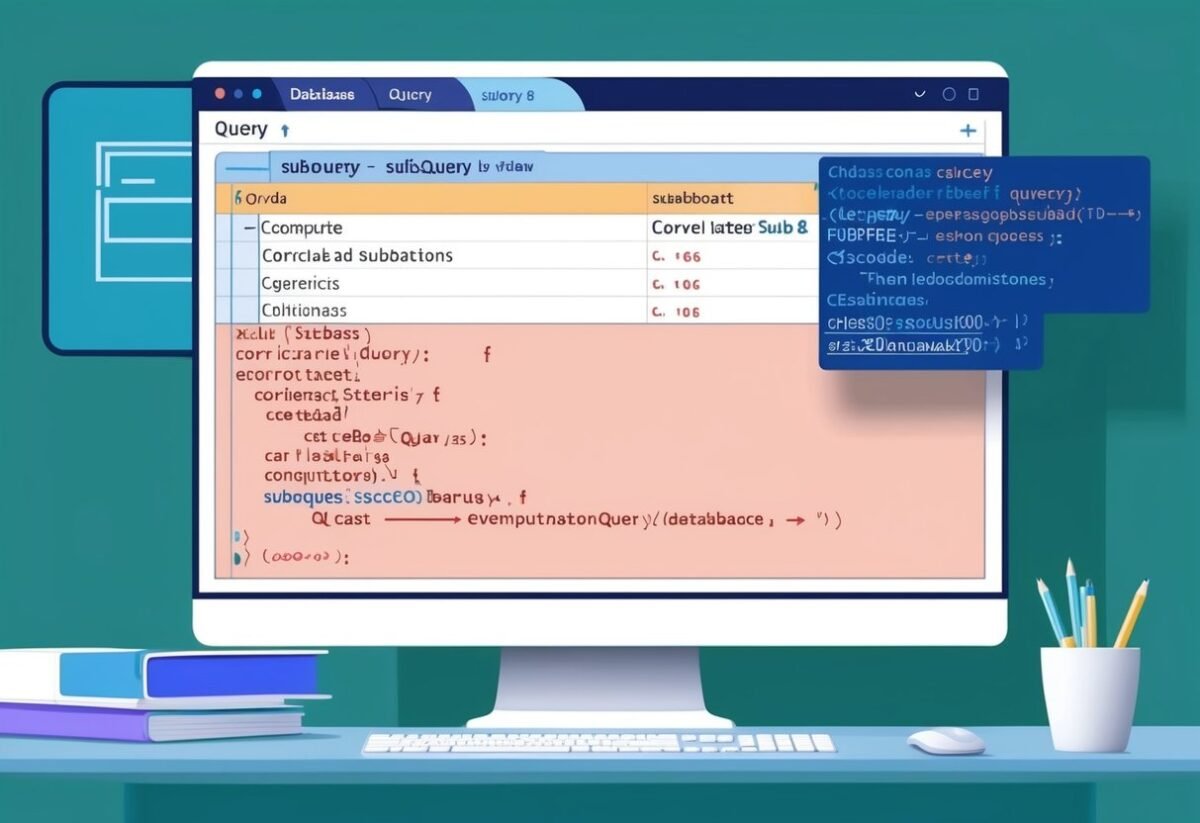Understanding Correlated Subqueries
Correlated subqueries are a powerful feature in SQL, used to create complex queries that involve comparisons of rows within a dataset.
These subqueries depend on the outer query to return results, making them essential in scenarios where relationships between datasets need to be examined closely.
Definition and Role in SQL
A correlated subquery is a query embedded inside another query, known as the main query or outer query. Unlike standard subqueries, a correlated subquery cannot be executed on its own.
It refers to columns from the outer query, which affects its execution cycle and is key to its function. It runs once for every row processed by the main query.
Using correlated subqueries is advantageous in retrieving data that meets specific criteria based on another dataset.
For instance, finding employees earning more than the average salary in their department showcases the strength of this approach.
In this way, these subqueries are dynamic and context-sensitive, making them excellent for complex database operations.
Correlation Between Subquery and Outer Query
The correlation between the subquery and outer query is what distinguishes correlated subqueries from others. This relationship means that the performance of the inner query depends heavily on the outer query.
Each row considered by the outer query triggers the execution of the inner query, creating a close linkage between the two.
This dependency is not only crucial for their functionality but also influences performance. Since the inner query executes multiple times, queries using a correlated subquery can become slower.
Optimization and careful consideration of the necessary criteria can help address these performance issues.
Examples include using it to filter employees who earn more than other employees in the company for specific periods or job titles.
Anatomy of a Correlated Subquery
Correlated subqueries in SQL are distinct due to their close relationship with the outer query.
These subqueries execute once for every row processed by the outer query. This feature makes them powerful tools for tasks like filtering and comparing data across related tables.
Core Components
A correlated subquery typically appears inside a WHERE clause and relies on columns from the outer query for its execution. The subquery cannot run independently because it depends on the outer query’s data to provide its results.
For instance, in the statement SELECT employee_id FROM employees WHERE salary > (SELECT AVG(salary) FROM employees e2 WHERE e2.department_id = employees.department_id), the subquery references employees.department_id to filter results. This dynamic reference to the outer query is what makes it correlated.
The use of correlated subqueries can be an alternative to complex join operations, providing a more straightforward way to manage conditions that involve relationships between multiple datasets.
The Correlation Mechanism
The correlation mechanism is the feature that binds a subquery to its outer query. It involves references to columns in the select clause of the outer query, which allow the subquery to adapt its output based on each row’s data.
For example, these queries aid in finding entries that meet specific criteria compared to other rows, making them useful for calculating averages or sums within a group and filtering the results accordingly.
The execution of correlated subqueries requires the SQL engine to evaluate the subquery for each row from the outer query set, making them resource-intensive but effective for solving complex data retrieval problems.
The ability to execute dynamically ensures that each row is checked against the criteria set by the subquery. This adaptability allows SQL users to derive insights from their databases with considerable precision.
Writing Effective Correlated Subqueries
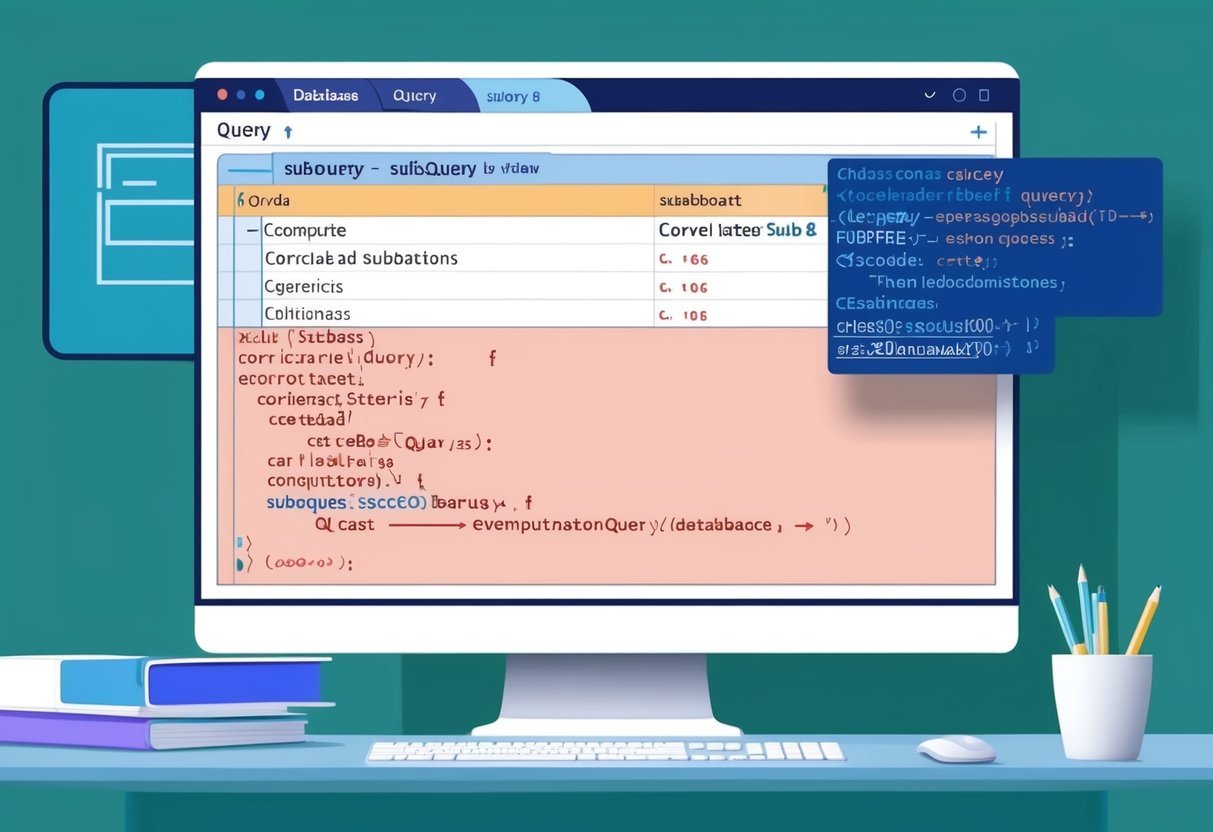
When creating correlated subqueries, it’s crucial to understand the unique aspects that differentiate them from regular subqueries. Key areas to focus on include their syntax, common pitfalls, and best practices to avoid performance issues.
General Syntax
Correlated subqueries stand out because they use data from the main query, almost like a loop. This is a core part of their syntax. The execution plan involves running the inner query repeatedly for every row in the outer query.
A typical structure might look like this:
SELECT column1
FROM table1
WHERE column2 = (
SELECT column3
FROM table2
WHERE table1.column4 = table2.column5
);
In this example, table1.column4 = table2.column5 establishes the correlation between the tables. This relationship allows accessing columns from both the inside and outside queries.
Common Pitfalls and Best Practices
Common pitfalls include performance issues due to repeated execution. Performance can be affected if the data set is large or if the query is complex. Using SQL correlated subqueries without indexes can significantly slow down database responses.
Best Practices:
-
Use indexes: Applying indexes to the columns used in the join conditions can improve speed.
-
Optimize conditions: Ensure that the subquery returns a limited data set to maintain efficiency.
-
Limit nesting: Avoid overly nested queries, which can complicate debugging and impact readability.
By following these guidelines, you can write efficient correlated subqueries that maintain both speed and clarity.
Correlated Subqueries in Select Statements
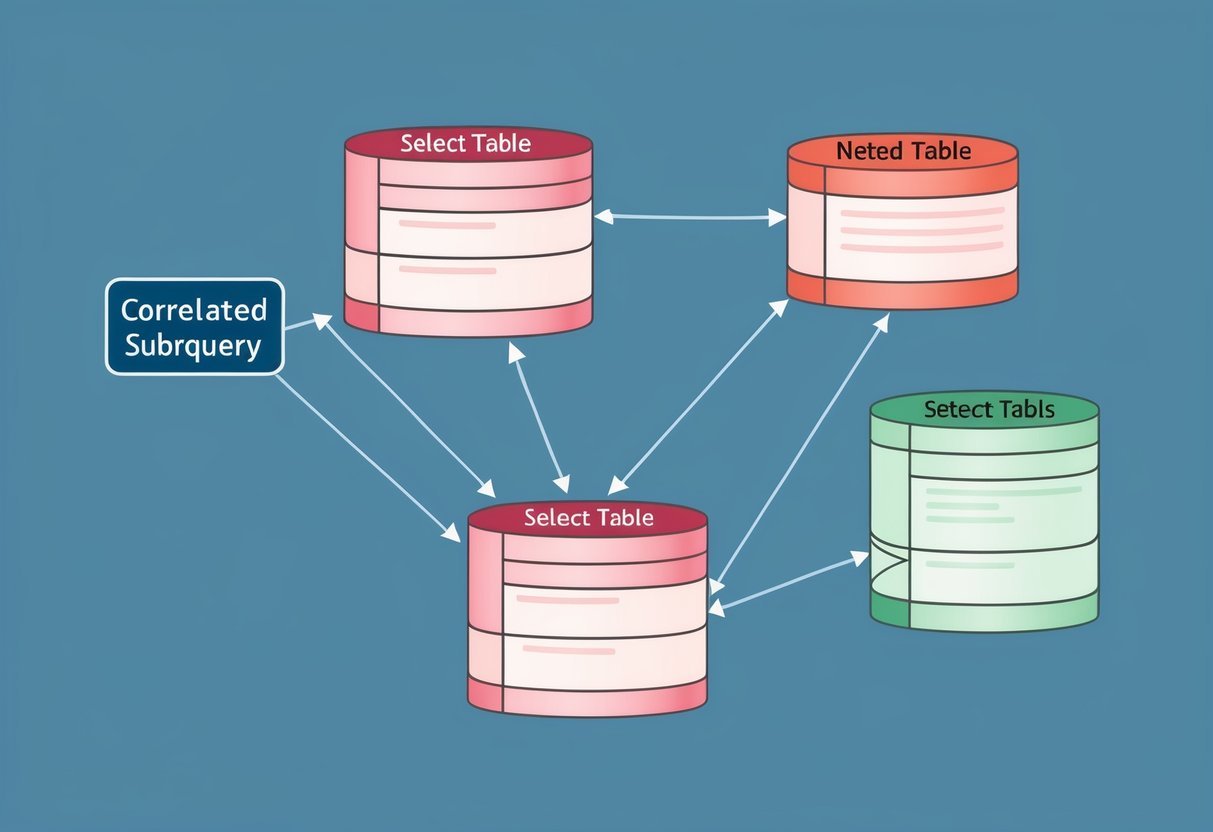
Correlated subqueries are useful in SQL select statements when a query requires comparison with rows in the outer query. Unlike nested subqueries, a correlated subquery relies on data from the containing query to function, leading to dynamic execution for each row processed by the main query.
These subqueries are often found in clauses such as WHERE or HAVING.
For instance, when selecting employees who earn more than the average salary of their department, a correlated subquery can effectively access department-level data dynamically for each employee.
SELECT employee_id, name
FROM employees emp
WHERE salary > (
SELECT AVG(salary)
FROM employees
WHERE department_id = emp.department_id
);
Key Features:
- Dependent: The inner query depends on the outer query for its execution.
- Row-by-Row Execution: Executes repeatedly for each row in the outer query, making it ideal for row-level comparisons.
Benefits:
- Dynamic Data Retrieval: Ideal for retrieving data that needs to adapt to conditions in the main query.
- Complex Queries Simplified: Helps restructure complex query logic into more understandable formats.
Correlated subqueries can also be applied in update and delete operations, offering more control in modifying datasets. For more on correlated subqueries in update statements, check out this guide.
Utilizing Correlated Subqueries with Where Clause
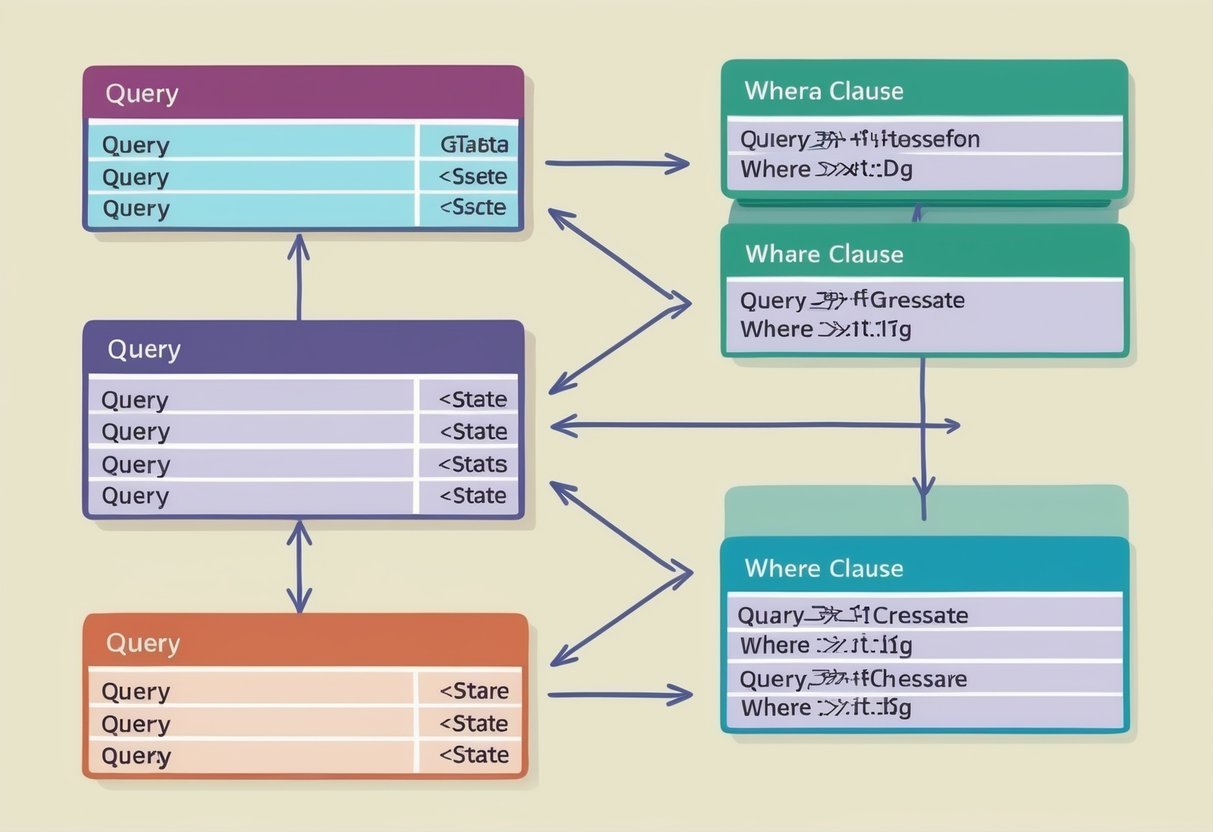
Correlated subqueries are integral in SQL when involving a dynamic reference between an inner subquery and an outer query. This feature is notable because each row processed by the outer query impacts the subquery’s execution.
In the context of a WHERE clause, a correlated subquery can filter results based on specific conditions that must be met. This helps in finding rows in one table that are linked to criteria in another.
For example, one might use a correlated subquery to select employees with salaries above the average salary of their department. The inner subquery calculates the average, while the outer query checks each employee against this value.
To illustrate:
SELECT employee_id, employee_name
FROM employees e
WHERE salary > (
SELECT AVG(salary)
FROM employees
WHERE department_id = e.department_id
);
In this query, the subquery references department_id from the outer query. The correlated subquery must execute once for each row considered by the outer query, making it more resource-intensive than independent subqueries.
Correlated subqueries can be a robust tool for complex data retrieval, providing flexibility where simpler queries might fall short. The performance may vary, but the additional precision often outweighs the cost. Always consider the database system when implementing such solutions for optimal efficiency.
Incorporating Aggregate Functions
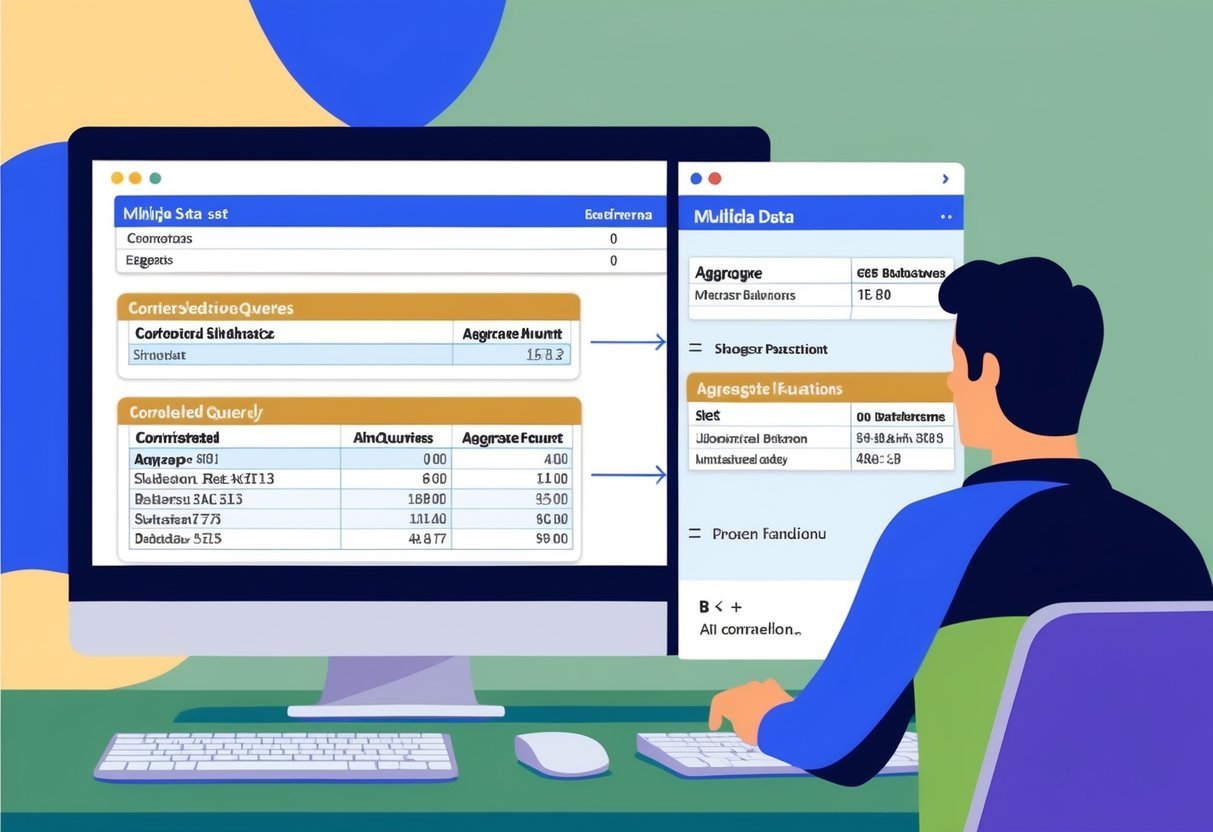
Incorporating aggregate functions such as COUNT, SUM, and AVG enhances the capabilities of correlated subqueries. Understanding how these functions work with correlated subqueries is essential for tasks like calculating an average salary or preparing comprehensive reports.
Count, Sum, and Average with Correlated Subqueries
Correlated subqueries allow the use of aggregate functions like COUNT, SUM, and AVG. These functions can calculate data dynamically within each row of the outer query.
One common use is to find the total or average value, such as calculating the average salary per department.
By embedding a subquery that calculates the sum or average within an outer query, users can obtain detailed insights.
For example, finding the total of product orders for each category may involve a subquery that sums orders linked to the category ID in the outer query.
Aggregate functions in correlated subqueries provide flexibility for individual row calculations, integrating results efficiently with other query data.
Operational Challenges
Despite their usefulness, operational challenges may arise when using aggregate functions in correlated subqueries. These challenges can include errors such as attempting to use an aggregate within another aggregate function without proper handling.
Care must be taken to ensure each subquery returns a compatible data set, as mismatches can result in issues like runtime errors.
For instance, in calculating the average salary using a subquery, one must ensure that the outer query correctly references each department to match results accurately.
Another challenge involves ensuring that execution times remain efficient, as correlated subqueries can slow down if not optimized.
Techniques like indexing can help manage the cost of operations, maintaining performance while using complex calculations.
Existential Conditions in Correlated Subqueries

In SQL, existential conditions using correlated subqueries help in determining the presence or absence of specific records. They employ operators like EXISTS and NOT EXISTS to enhance the dynamism and efficiency of queries.
Exists vs Not Exists
The EXISTS operator is used to check if a subquery returns any rows. When the subquery results have at least one row, EXISTS returns true. This helps determine if certain conditions are met within the correlated subqueries, where the subquery depends on the outer query.
NOT EXISTS does the opposite. It returns true when a subquery finds no rows.
These operators are critical for managing queries that need to identify missing or unavailable data.
Using EXISTS and NOT EXISTS can improve performance as databases often stop processing further rows once conditions are met, compared to alternative operations that may evaluate all rows.
Practical Usage Scenarios
EXISTS is often used in checking membership in datasets. For instance, when evaluating customers who have made at least one purchase, a query with EXISTS efficiently identifies these cases by checking against purchase records.
NOT EXISTS is valuable for filtering out items that do not meet certain criteria. For instance, to find products without sales records, a NOT EXISTS condition removes items found in the sales table.
This approach is efficient for extensive datasets as it allows specific conditions to determine the presence or absence of data without scanning the entire data range. Such usage scenarios make these conditions crucial in SQL to manage complex data relationships effectively.
Modifying Data Using Correlated Subqueries

Correlated subqueries allow users to perform complex data modifications efficiently.
They enable dynamic updates and deletions based on specific conditions tied to data in the outer query. This approach provides flexibility and precision in data manipulation.
Update Commands
Correlated subqueries can enhance the effectiveness of UPDATE commands. By referencing data from the outer query, they help tailor updates to meet specific criteria.
For instance, if one wants to adjust salaries for employees in certain departments, a correlated subquery can specify which rows to update based on a condition linked to another table.
This ensures that only the relevant data is altered, preserving the integrity of the rest of the dataset.
Using correlated subqueries in update commands can simplify the process of aligning data across multiple tables without the need for complex procedures. For more on correlated subqueries, visit the GeeksforGeeks article.
Delete Commands
The DELETE statement, paired with correlated subqueries, allows targeted removal of rows from a database. This method is particularly useful for deleting records that meet specific conditions, such as removing students from a course based on their grades in related subjects.
By referencing the outer query, the correlated subquery can evaluate the necessary conditions to identify the correct records for deletion. This approach helps maintain the quality and accuracy of the data.
For practical examples and exercises, check out the SQL Correlated Subquery Exercises.
Working with Joins and Correlated Subqueries

Correlated subqueries and joins are essential tools in SQL for querying databases efficiently. Both techniques allow users to combine and filter data from multiple tables, but they work in different ways.
Joins are used to combine data from two or more tables based on a related column. They come in various types, such as INNER, LEFT, and RIGHT join.
Joins are generally faster for large datasets because they combine the tables on-the-fly without needing to execute repeatedly.
Correlated subqueries, on the other hand, are subqueries that use values from the outer query. This means the subquery depends on the outer query for each row processed.
This type of subquery executes repeatedly, checking conditions against outer query rows, making it useful for tasks where row-specific checks are necessary.
Example SQL Query with Join:
SELECT employees.name, departments.dept_name
FROM employees
INNER JOIN departments ON employees.dept_id = departments.id;
This query retrieves employee names and department names by joining the ’employees’ and ‘departments’ tables on matching department IDs.
Example SQL Correlated Subquery:
SELECT employees.name
FROM employees
WHERE salary > (
SELECT AVG(salary)
FROM employees emp2
WHERE employees.dept_id = emp2.dept_id
);
This query finds employees whose salaries are above the department average by using a correlated subquery. It executes the inner query for each employee and checks if their salary exceeds the department’s average salary.
In environments like SQL Server, using a correlated subquery can sometimes be replaced with complex join operations, which may improve performance in certain scenarios.
Optimizing Correlated Subquery Performance

Correlated subqueries can sometimes slow down database performance due to their repeated execution for each row in the outer query. By identifying repeating subqueries and using techniques like the EXISTS operator, performance can be improved significantly.
Recognizing Repeating Subqueries
Repeating subqueries often occur when the subquery relies on values from the outer query, which causes it to execute for each row. This can heavily impact performance.
To address this, it is crucial to identify parts of the subquery that do not change with each execution. When patterns of repetition are noticed, it suggests that optimization techniques may be necessary. Understanding the relationship between the outer and inner queries helps in pinpointing inefficiencies.
Optimization Techniques
Several methods can enhance the performance of correlated subqueries.
One technique involves using the EXISTS operator to check for the existence of rows, which can be more efficient than retrieving entire rows.
Rewriting subqueries to eliminate unnecessary computations can also improve speed. For instance, using APPLY operators instead of correlated subqueries can reduce redundancies.
Furthermore, indexing relevant columns ensures that the database can quickly access the required data. These strategies effectively enhance query performance.
Practical Examples of Correlated Subqueries
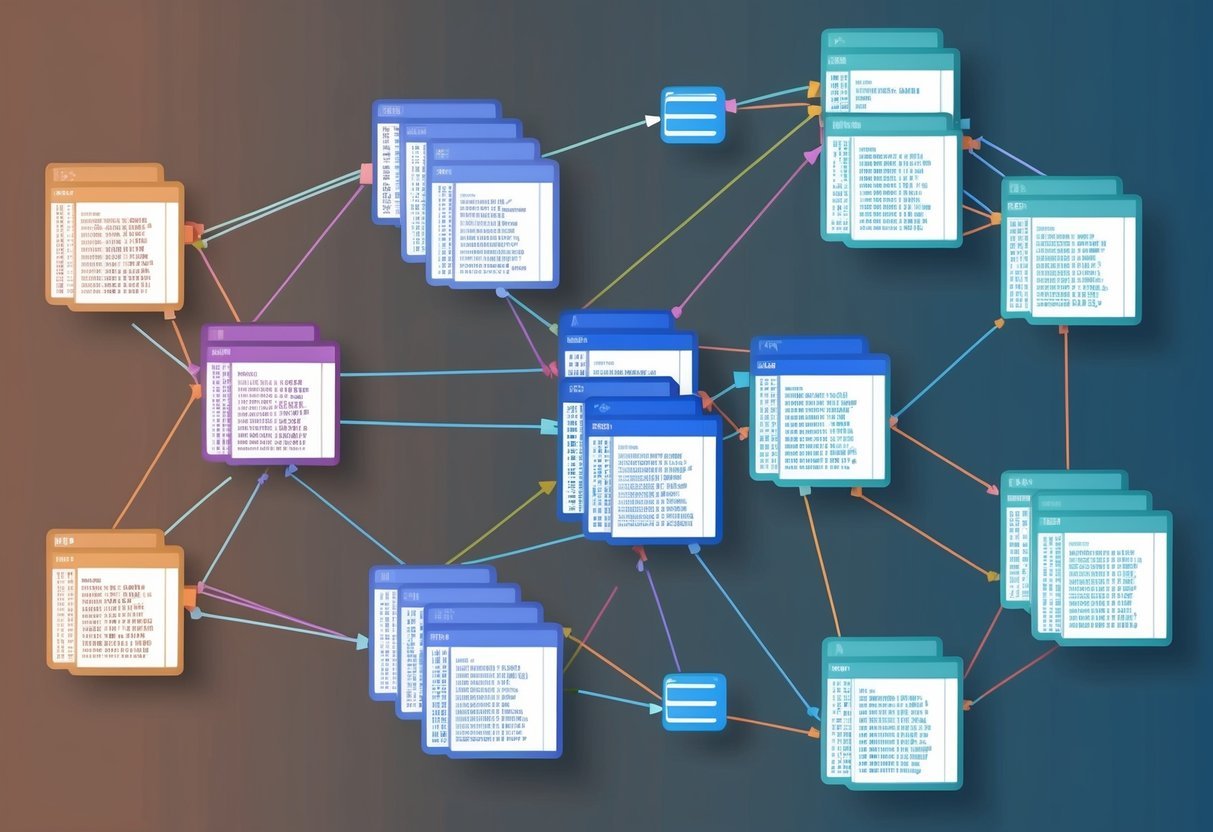
Correlated subqueries are important for retrieving data by using values from an outer query. These examples focus on employee data and customer payment analysis, demonstrating how correlated subqueries can be applied in real-world scenarios.
Employee Data Queries
To find employees with above-average salaries within their department, a correlated subquery can be useful. In the example, the outer query selects details from the employee table.
The inner query calculates the average salary for each department by comparing each employee’s salary with their department’s average. This ensures that the query considers each employee’s specific department context, providing tailored results.
Additionally, correlated subqueries allow for the evaluation of specific conditions, like the maximum or minimum value within a group.
For instance, if you need to identify which employees have the highest bonus in their respective teams, using a correlated subquery enables precise filtering. It compares each bonus to others in the same group, effectively identifying top performers based on available data.
Customer Payment Analysis
When analyzing customer payments, correlated subqueries help in processing transactions with specified criteria.
For example, to identify customers who have made payments higher than the average for a particular payment_type, the correlated subquery calculates the average payment per type. The outer query selects customer details from the customer table based on these conditions.
Another application involves determining frequent customers by transaction frequency. A query might use a correlated subquery to count transactions per customer, comparing them to a threshold.
This filtering helps pinpoint customers with high engagement, providing valuable insights into customer behavior and loyalty patterns.
These applications of correlated subqueries highlight their significance in data analysis tasks involving complex relationships and calculations.
Advanced Correlated Subquery Exercises

Correlated subqueries can greatly enhance SQL query capabilities. They are especially useful in performing complex data retrieval tasks. These exercises will help you understand how correlated subqueries work with different SQL clauses.
A common exercise involves finding employees with a higher salary than those in a specific department. For this, the subquery references the department_id to filter the results from the employees table.
-
Distinct Results: Use correlated subqueries to identify distinct entries. For instance, find employees with salaries greater than the average salary in their department.
-
Combining with the HAVING Clause: Check which departments have employees earning more than the department’s average salary. The HAVING clause works with the subquery to filter groups.
For additional exercises, refer to platforms like LearnSQL.com for practical practice. These exercises often include variations using different SQL operators and clauses.
Understanding the dynamics of correlated subqueries provides problem-solving skills beneficial for advanced SQL applications. These exercises offer a deeper grasp of data manipulation and retrieval techniques.
Frequently Asked Questions
Correlated subqueries add dynamic data retrieval capabilities by linking subqueries with outer queries. They’re useful for tasks like filtering results and managing complex data updates. Different database systems handle them in unique ways, particularly impacting performance and functionality.
What distinguishes a correlated subquery from a normal subquery?
A correlated subquery is unique because it references columns from the outer query. This makes it dependent on the outer query for each row’s individual execution. In contrast, a normal subquery runs independently and only once for the entire outer query.
How can one recognize a correlated subquery in a SQL query?
One can identify a correlated subquery by looking for references to tables from the outer query within the subquery itself. This dependency on the outer query is a defining trait, making the subquery execute repeatedly for each row processed in the outer query.
What are some common use cases for correlated subqueries?
Correlated subqueries are often used in scenarios like filtering data based on calculations involving rows in another table. They are also helpful for complex aggregations, such as identifying specific rankings or matched pairs of records that meet particular conditions.
Are there any performance considerations when using correlated subqueries?
Correlated subqueries can impact performance because they are executed multiple times—once for each row in the outer query. This can be slower than a single execution of a non-correlated subquery. Efficient indexing and query optimization can help mitigate some of these performance issues.
In what ways do correlated subqueries behave differently across various database management systems?
Different database management systems might optimize correlated subqueries in unique ways. While systems like SQL Server may offer optimizations for specific scenarios, others might require manual query tuning for efficiency.
How does Snowflake’s support for correlated subqueries compare to other RDBMS?
Snowflake supports correlated subqueries and often optimizes them effectively.
The platform’s optimization techniques can differ from traditional RDBMS systems. This can allow for more flexible and efficient query execution, depending on the complexity and structure of the queries used.
